Lady Peaceful, Lady Happy?
Liza Minnelli was in Germany filming Cabaret when we first met in 1971. Twenty-five years old, she was carrying the expectations of a major movie. Tiny, tense and talkative, she was adorable, funny, full of bounce – and so, so young. Her every feature seemed exaggerated: her mouth was enormous, absurd, out of all proportion with what she called, disparagingly, her ‘mouse face’ with ‘a tiny chin’. False eyelashes thick as Bambi’s were specially made to fit the downturned curves of her huge, sombre, Italian eyes. The black hair was a sleek cap cut into a sharp pointed fringe, and when she arched her fingers over her head, nails painted brilliant green, she resembled a bizarre dragonfly.Liza herself created that extraordinary appearance – though author Christopher Isherwood described the green nails in his novella Sally Bowles, later published in Goodbye to Berlin, which in turn inspired the musical and the subsequent film (directed by Bob Fosse and co-starring Joel Grey).
She talks as if it were all just yesterday. ‘When they told me I was going to play Sally, my dad [director Vincente Minnelli] showed me pictures of Louise Brooks and all of these exotic, wonderful creatures. And I thought, “Oh great!” and started thinking about the look. I was in Los Angeles, and I saw this eyelash shop. I went in and said, “Hi. Whaddya got? I’m making this character and I want her to be extraordinary!” I dyed my hair and cut it in a point with Joel’s help. I knocked on Fosse’s door the night before we started shooting and said, “Whaddya think?” He went, “What the... you didn’t ask... I think it’s great.”’
Back then she was Judy Garland’s little girl with a fast-blossoming career. At 19, Life magazine spoke of her ‘awkward, captivating charm... a voice that quivered sweetly and occasionally got out of control’. Then Cabaret turned her into a global superstar. It was strong material, dealing with anti-Semitism in Nazi-era Berlin, abortion, collaboration, betrayal and homosexuality. It is still her best film work and she lives with the knowledge that her portrayal of Sally Bowles, all red lips and bowler hat, black stockings revealing white thighs, will forever define her.
Today Liza has rushed back, breathless, from two hours teaching singing at the Actors’ Studio to her apartment in Manhattan, which she bought in the Seventies. Notorious for being late, her infectious warmth is still endearing: ‘Oh, sweetheart, forgive me for keeping you waiting...’
We had spent two days together when I shadowed her at the film studios outside Munich 40-odd years ago. For a moment, her welcome convinces me she remembers. But it’s probably a practised, professional tool.
She lives high in a towering white brick building on the fringe of Central Park. In her hallway four Warhol portraits are hung together to make a full wall of different coloured Lizas. Beyond the hallway is the big open-plan lounge. There are more Warhols – including ones of both her parents – a stunning black-and-white photograph of Judy Garland and several paintings by Frank Sinatra (who knew he painted?). There’s red carpeting, white marble floors, mirrored walls, orchids, great red-lacquered coffee tables and Tiffany ashtrays. Big windows frame a glittering panorama of Manhattan. And of course there are the awards – an Oscar for Cabaret and she already had a Tony: she is one of the elite group to possess every showbiz gong there is.
While we talk there are various interruptions, mysterious disappearances, brief shouted conversations with invisible people (‘...all right... I goddit... in a minute... hang on...’). So one thing hasn’t altered: a nervy excitement still fizzes round her, filling the room. Three miniature schnauzers scamper around.
She turns 67 this month but the artfully spiked punk-pixie hair, unnaturally black like the eyebrows, makes her oddly ageless. Curled in the corner of an outsize cream sofa, she is in slouchy trousers, a black hoodie and a T-shirt. She holds out bare nails for inspection. ‘Look, dead white. I have a few days’ rest and relax. Actually I have flu, had a shot from the doc today,’ she sighs. ‘I always feel under pressure to be glamorous, to be bubbly.’ She adds, touchingly, ‘It’s just what people expect’.
Some questions go ignored. She tells stories that start promisingly (‘I was playing Vegas when I was young enough that they wouldn’tlet me in the casino. I had to go through the kitchens...’), but loses the thread and talks about people I’ve never heard of.
Everyone is wonderful, everyone has influenced her. ‘Aznavour showed me... Sammy taught me... Frank always...’ It’s sweet, sort of, and strange. Perhaps because people are always asking about her life, the past for her hovers very close.
She leaves the room briefly and returns, having changed into flat shoes. Forty years ago I was just a bit taller than her and I’m only 5ft 4in. But she’s much shorter now. A lifetime of dancing has punished her body. She has two crushed discs, plates and screws, two false hips and a wired-up knee. ‘I’m Dorothy’s daughter up top and the Tin Man down below,’ she says ruefully.
We talk about her London appearance in March when she is performing songs from Cabaret and other classic Minnelli hits. Will she be dancing or, um, is she beyond that now? She pounces, laughing: ‘That was so, so polite of you!’
Truth to tell, Liza hasn’t danced on stage for a couple of years. She still looks terrific up there but, in fact, she now uses cleverly choreographed routines with minimal moves and lots of arm gestures. Occasionally, she even sits down. ‘There are times when I get up there and I feel so clumsy, oh man. Then I think of my dance teacher Luigi saying, “Chest up, get your balance, adjust... Go.” Once you get loosened up, it’s heaven.’
Luigi, now in his eighties, has taught her since she was 13 and is a key part of her life. He has worked with everyone from Gene Kelly to Astaire – and Garland herself. ‘He stresses the importance of using the body properly. If you keep doing things right long enough, they’ll get better – right. But, if you keep doing things wrong long enough, they’ll feel right – and that’s wrong.’
Forty years ago Liza was in need of constant companionship, more than a touch insecure. Now, when I ask what she plans to wear for London, she gives a little gasp. ‘Oh my gosh, I’m so glad you asked...’ A note of real anxiety, almost panic, comes into her voice. The insecurity is still there, after all these years. ‘What do you think I should wear?’
Liza Minnelli, living legend, is asking me? So where are the designers, the stylists, the dressers? I’ve read she has three assistants, a nutritionist, a physiotherapist. ‘Oh please. At my age? I don’t! I have Nicole [her assistant], she’s a treasure – I call her Mighty Mouse – and my crew of three guys, who are wonderful. I’ve cut my band down to seven guys; it used to be 25. Things are different now.’
She travels without fuss. ‘I wear a baker boy cap and comfy trousers.’ The woman who once partied nonstop reveals, ‘I like to eat at friends’ houses. And I love fish and chips.’
At 25 she was a romantic who read Colette and Scott Fitzgerald. She didn’t care two hoots about appearances. Her two fur coats arrived because her agent bought them when he could no longer stand her poverty-stricken look. Her then-lover Rex, a fluffy-haired musician, had just given her a pearl necklace, earrings and bracelet: she wouldn’t wear them, agonising over whether it had hurt the oysters. (The provenance of the fur coats didn’t seem to bother her.)
Her look was created by the designer Halston, who also styled her apartment. Remember her purple frock in Cabaret’s Kit Kat Club, small breasts bare beneath clinging fabric? Similar halter-neck dresses, fabulously sequined, became her signature during the nightclubbing, party-pill-popping years of the Seventies and early Eighties. Now she wears a lot of black and red, a lot of glitter.
At 25 she confessed, ‘I do like thin,’ while nibbling greenery in a restaurant after an exhausting series of takes. ‘I won’t eat for a couple of days, then I’ll have chips and cream cheese and chocolate.’ It never changed: Halston made her clothes in three sizes to accommodate dramatic weight swings.
Among the first to champion Aids victims, long before Liz Taylor, her sympathy surely comes from the bisexuality of her father and two of her four husbands. She acknowledges that ‘Some have labelled me a gay icon. Well, no sh*t, Sherlock. Are you going to meet a lot of basketball players when you’re performing on Broadway?’
All those years ago she sang, memorably, ‘Maybe this time I’ll be lucky, not a loser any more, like the last time and the time before: Lady Peaceful, Lady Happy, that’s what I long to be...’
Neither of us imagined that those words would predict Liza’s emotional life. She may now (I so hope) be Lady Happy, but Lady Peaceful is not in her nature. How could it be, with the emotional baggage she carries? We are all of us our parents’ children, but this woman is never allowed to forget her lineage. A public figure from the time she was a toddler (‘I came out of the womb looking for the camera angle’), she has never been permitted privacy. So we know all about the problems: Liza is showbiz’s most famous high-wire act.
There has been a lot of kooky behaviour over the years. Drugs and drink and rehab, collapses and cancelled concerts and surprising revivals. Several miscarriages cost her the children she would have loved. ‘It’s one of my life’s true regrets. They would have given me a centre of gravity.’
Her own childhood was famously fraught. She has too many stories about how she took care of her siblings, and refilled her mother’s sleeping pills with sugar. ‘I had tremendously interesting childhood years – except that they had nothing to do with being a child.’ If she learned too much about life too soon, that experience surely formed her personality, her determinedly upbeat attitude. ‘The regrets of yesterday and the fear of tomorrow can kill you,’ she says philosophically. Michael Feinstein, the singer pianist with whom she often shares a stage, says, ‘When the world ends, cockroaches will survive. And Liza Minnelli.’
Any one of the repeated surgeries on her body, the work on her teeth, polyps on her vocal cords, double pneumonia and damaged lungs, the near fatal bout of viral encephalitis that threatened life in a wheelchair, would have finished the career of any other woman. After breaking a leg falling over one of her schnauzers, she was carried onstage by bare-chested boys.
The press revelled in Garland’s dramas, as they do in her daughter’s. Does this bother her? ‘Oh, no!’ she says, sounding incredulous. ‘My mother taught me what to do. She said, “Give the public what they want, then go get a hamburger someplace.” She really did teach me that.’
She knows that we also want to read about the many, many men; lovers, fiancés, four husbands. An unlikely and very public London fling with Peter Sellers (the first item on a BBC Nine O’Clock News bulletin in 1973). Married to Jack Haley Jr, she had a relationship with Martin Scorsese, another with dancer Mikhail Baryshnikov. (I have been warned by her publicist, however, on no account to raise the divorce from David Gest.)
She is cutting down on appearances, but won’t stop. ‘Why? I feel great – besides all the false parts. You find what works and you build on that. I’m always looking at the next thing.’ And there must always be a next thing: Liza seems to have let various husbands handle the commercial side of her work, with varying degrees of success. Laid up by illness, ‘I watched the Warhols walk out the door. To the public, showbusiness may just mean the artistic part. But the dollar and cents element is the reality every performer has to face.’
She sounds tired as she adds – and it’s impossible not to feel for her – ‘I have a lot of people to support.’
What keeps her going? ‘Curiosity. Always.’ It’s true: when I mention that my musician son is in his own show at a Wall Street theatre, she is alive with interest. ‘Tell me about him. You’re coming to the Festival Hall? Bring him backstage.’ Liza so much wants people to love her. ‘I don’t have a life if I’m not in front of an audience. What makes people go into show business is “a dream of royalty”. Me, I just have a good time.’
And so do we. Listen to that voice, now tender, now raucous, making each song fresh. She gives us pure emotion. ‘If you get lost in it, and believe in it, so will the audience.
‘I’m not a very good singer,’ she admits. ‘I just know how to present a song. And honey, I think I’ve been through enough to do it right.’
Mighty Mouse’s voice is at the door. It’s time for Liza to push herself up from the sofa. ‘Darling, sweetheart, I gotta go, thank you so much...’
Flu or no flu, divas still have tight schedules.
Liza Minnelli will be singing songs from Cabaret at The Royal Festival Hall on March 1 as part of the Southbank Centre’s Berlin in the Twenties and Thirties weekend.
This article originally appeared in Saga Magazine . For more fascinating articles like this, delivered direct to your doorstep each month, subscribe today.





















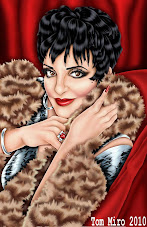

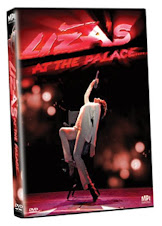






















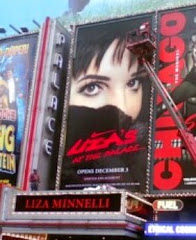




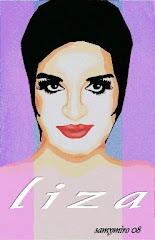


























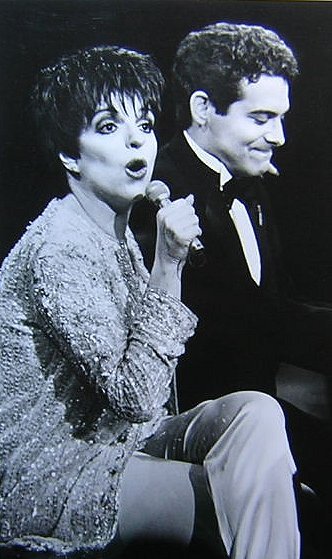


































No comments:
Post a Comment